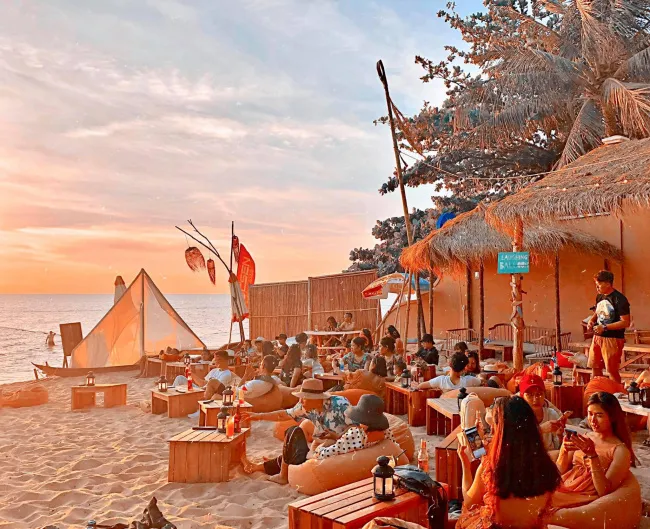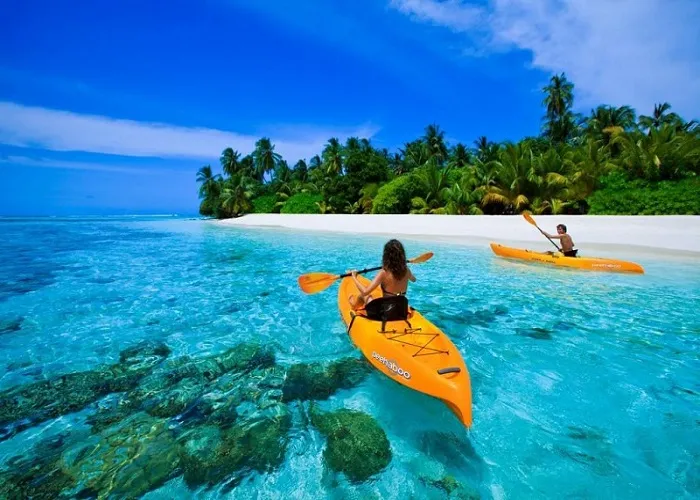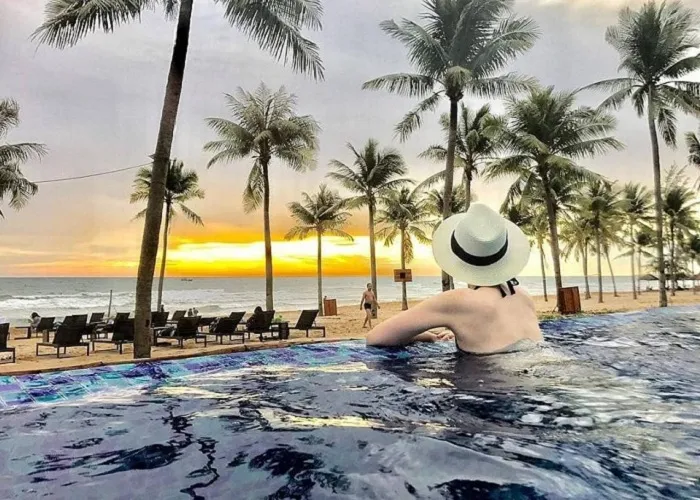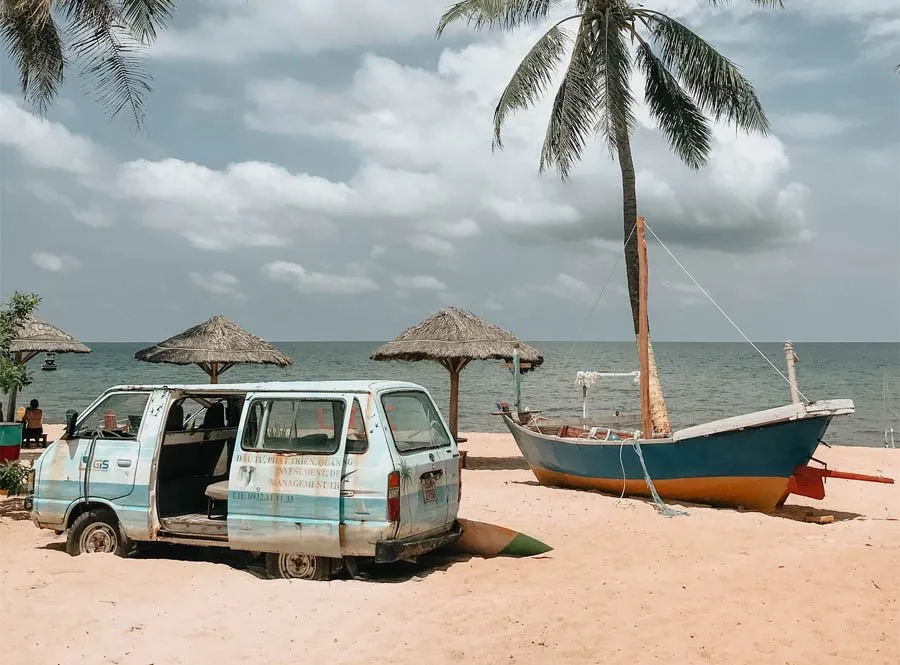Phu Quoc (pronounced "foo kwok") - an unassuming Vietnamese island sitting pretty just off the coast of Cambodia - is one of south-east Asia's best-kept secrets. If last month’s launch of the first direct flights from London to Phu Quoc via TUI has tickled your interest, here are 10 more reasons to visit this untapped paradise now (before the crowds do).
- It's full of uninhabited remote islands

The Phu Quoc district is made of 28 islands, most of which are uninhabited while some are planned for development as private resorts. Spanning 574 square kilometres, Phu Quoc Island, where most of the tourism action takes place, is the largest in the district/country as well as in the Gulf of Thailand.
One of the region's most beautiful remote islands is Hon Xuong - often referred to as the Robinson Crusoe island after the novel of the same name - and can currently only be reached by boat.
With no accommodation available on site, the island is a popular day trip spot and its protected waters and picturesque beach can be enjoyed overnight by camping on the beach as part of a tour, but not independently.
Hon Thom, the district’s second largest island (also known as Pineapple Island), is connected to Phu Quoc Island via what’s said to be the world’s longest oversea cable car, which travels a total distance of about eight kilometres in 8.5 seconds, carrying up to 3,500 passengers per hour in 70 cabins. With plans underway for the island to be transformed fully into a marine park, it currently offers several watersports activities including snorkelling, diving and yacht tours of the An Thoi archipelago (which occupies 15 of the district’s islands).
- ...and unspoilt beaches
The district boasts 150 kilometres of coast with ice cream-soft sand and Phu Quoc Island is home to around 20 unspoilt beaches, trodden mostly by locals or tourists from Asian countries nearby. Khem Beach is one of its most beautiful, overlooking Emerald Bay with powdery white sands caressed by champagne-like effervescent waves.

Sao Beach, considered the “crown jewel” of Phu Quoc, is also known for its snow white beaches, while Long Beach, which boasts a 20-km coast on the west side of the island is ideal for sunsets and among the island’s most popular beaches.
There’s also a ‘secret’ patch on the eastern end of Rach Vem Beach known as “Starfish Beach” for its rich population of red starfish found bathing in the sun just a few feet from the water’s edge.
- Year-round heat
The island enjoys an average temperature of around 27°C, with the hottest month being April when mercury levels reach 29°C, so Phu Quoc offers comfortable year-round warmth for heat-seekers.

And while the winter chill settles in Britain and the rest of Europe, Phu Quoc’s dry season begins from November and lasts through March, making it an excellent winter sun spot.
- It’s getting a luxurious spruce-up
With several hostels offered on the island, Phu Quoc has typically been an off-beat stopover among backpackers travelling around other parts of South-east Asia. But a new crop of luxury hotels and resorts have been springing up along the coast as of 2015, aimed at giving the island an upmarket touch, including a handful of five-star resorts such as the stylish and elegant JW Marriott Emerald Bay Resort & Spa which opened this year with plenty of Instagram-worthy fodder.
The brainchild of renowned hotel architect and interior designer Bill Bensley, the whimsical resort is said to be the first-ever “experiential hotel” built entirely around a fictional history inspired by French naturalist Jean-Baptiste Lamarck. The sprawling beachfront resort, nestled on Khem Beach, is also home to a 50m-long infinity pool - claimed to be the longest pool in a presidential suite in all of Asia.

Other luxury resorts on the island include the Intercontinental Phu Quoc Long Beach Resort, while a Ritz Carlton is also said to be in the pipeline.
- Unique marine life
Phu Quoc is a hub of marine activity, housing large patches of coastal ecosystems, and nearly 108 species of corals, 135 species of coral reef fish and 132 different types of mollusks, as well as migrating fish and marine mammals in its surrounding waters. Phu Quoc is one of the few places in the country where wildlife enthusiasts can spot unique species like dugong, the hawksbill turtle and green turtle.
- Half of the island is a protected natural park
Around 50 per cent of Phu Quoc Island is a national park set within the Kien Giang Biosphere Reserve, which fosters the conservation of its tropical rain forests featuring waterfalls, coral reefs, wetlands and other parts of the surrounding natural landscape, as part of Unesco’s MAB (Man and the Biosphere) programme. The island also has a mountain landscape of 99 peaks running along the 48-km length of the island, with Chua Mountain being the highest at 603 metres.
- Local charm and culture
With an economy still based around fishing and agriculture, the island is dotted by sleepy villages whose claim to fame is fish sauce (in a similar vein to what olive oil is to Italy or tequila is to Mexico), which is said to be the world's best.

Back in 2013, its fish sauce became the first Vietnamese product to be given the European Union’s Protected Designation of Origin Status, which recognises local goods “whose quality or properties are significantly or exclusively determined by the geographical environment”, according to the country’s ministry of industry and trade. There are currently around 85 fish sauce producers in Phu Quoc.
The island also boasts the best organic pepper, producing around 1,100 tonnes of it every year using traditional farming methods and sustainable agricultural technologies.
Tourists can access tours of both the fish sauce factories and pepper farms for a closer look at local life. Or explore pockets of local charm at the night market in Duong Dong, one of the island’s main towns, where you can sample local delicacies.
- Quirky bars and restaurants

And for the hipsters who need their fix, there are some quirky restaurants to explore too, such as the Crab House, a sports-themed seafood shack run by a Vietnamese American local raised in the south of the US before returning to his hometown. Donning giant neck napkins, visitors can tuck into large bowls of fresh crab and lobster coupled with flavourful spicy sauces sprinkled with a dashing of American southern soul.
For the best aerial views over the town and the island, the chic Chuon Chuon Bistro & Sky Bar hits the spot with its hilltop location and could easily pull its weight in Shoreditch or Brooklyn.
Decked out in surfboards and lanterns, with a mix of young locals and tourists, Rory’s Beach Bar (run by a chatty and laid-back Australian sibling duo) offers a no-frills barefoot beachfront location for a relaxed sunset drink, with chairs and tables placed right on the soft sands of the water's edge.
- Its steeped in history
The country’s complex history runs deeper than the Vietnam War, from its battles with France and Spain to its contention with Cambodia over the ownership of Phu Quoc - both countries laying claim.
One of the most harrowing but moving memorials of the Vietnam War can be found at the Phu Quoc Prison, which was the largest prisoner camp in the south of Vietnam back in 1973. While the prison, built around 1950, has been closed, the site has been repurposed as a museum and memorial, built with fake prison quarters and mannequins depicting the prisoners' life and history of the camp, which is visited by local tourists, including some of the former inmates who are still living today.
- Easy access

Tourists to Phu Quoc can visit visa-free for up to 30 days and access from London just got easier with last month’s launch of direct flights from Gatwick to Phu Quoc International Airport, the first direct service from Europe. The island forms a calm base from which to explore other more hectic and tourist-heavy parts of the country, such as Ho Chi Minh, which is just an hour’s flight from the island, while the capital Hanoi can be reached in just over two hours by plane.